
Jake with his family: Beth, Quinn, & Nolan - North Twin Sister - July 2023. Photo credit: Jake Hartsoch
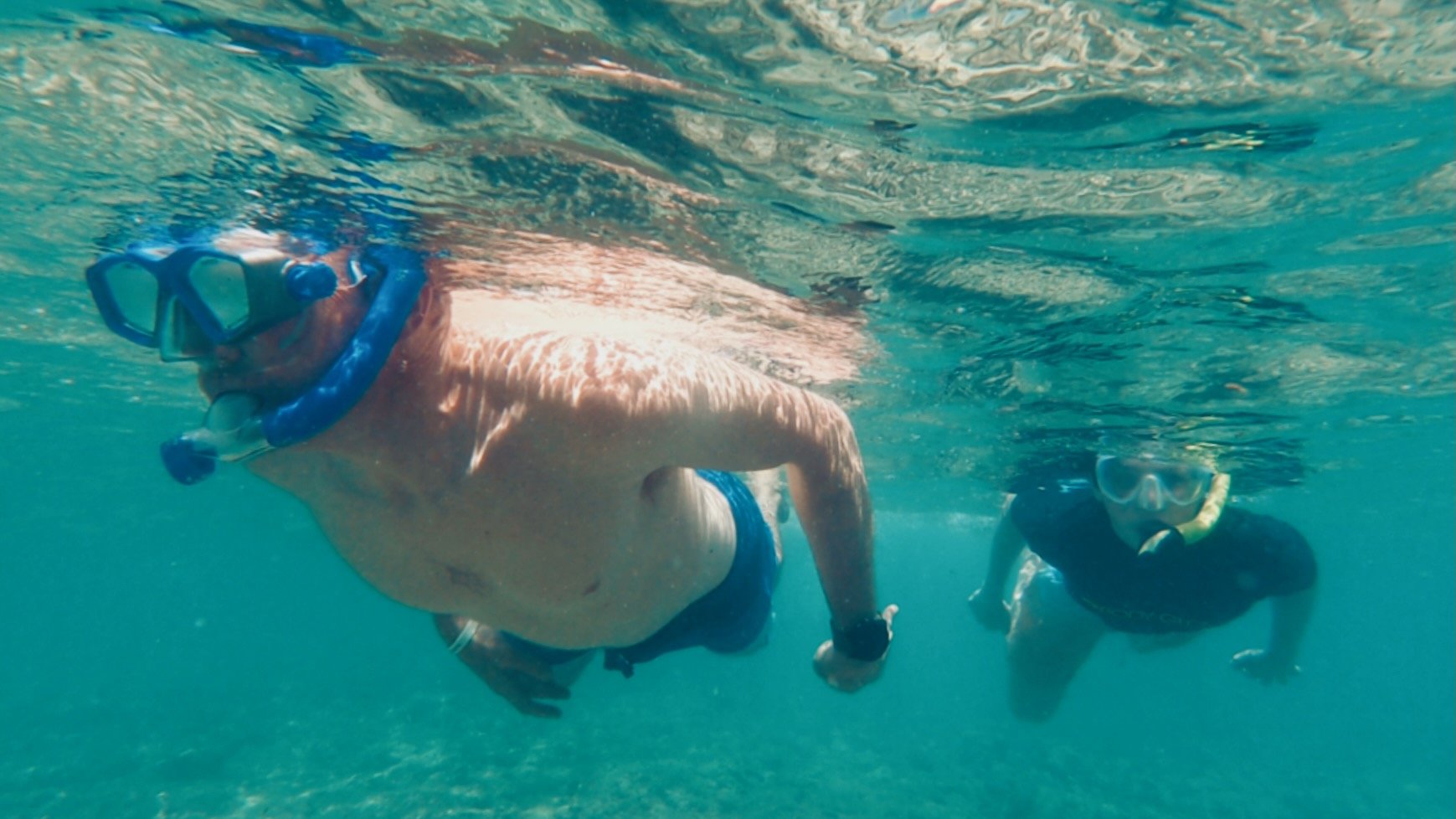
Jake and Nolan snorkeling - Oahu, HI - March 2024. Photo credit: Beth Hartsoch
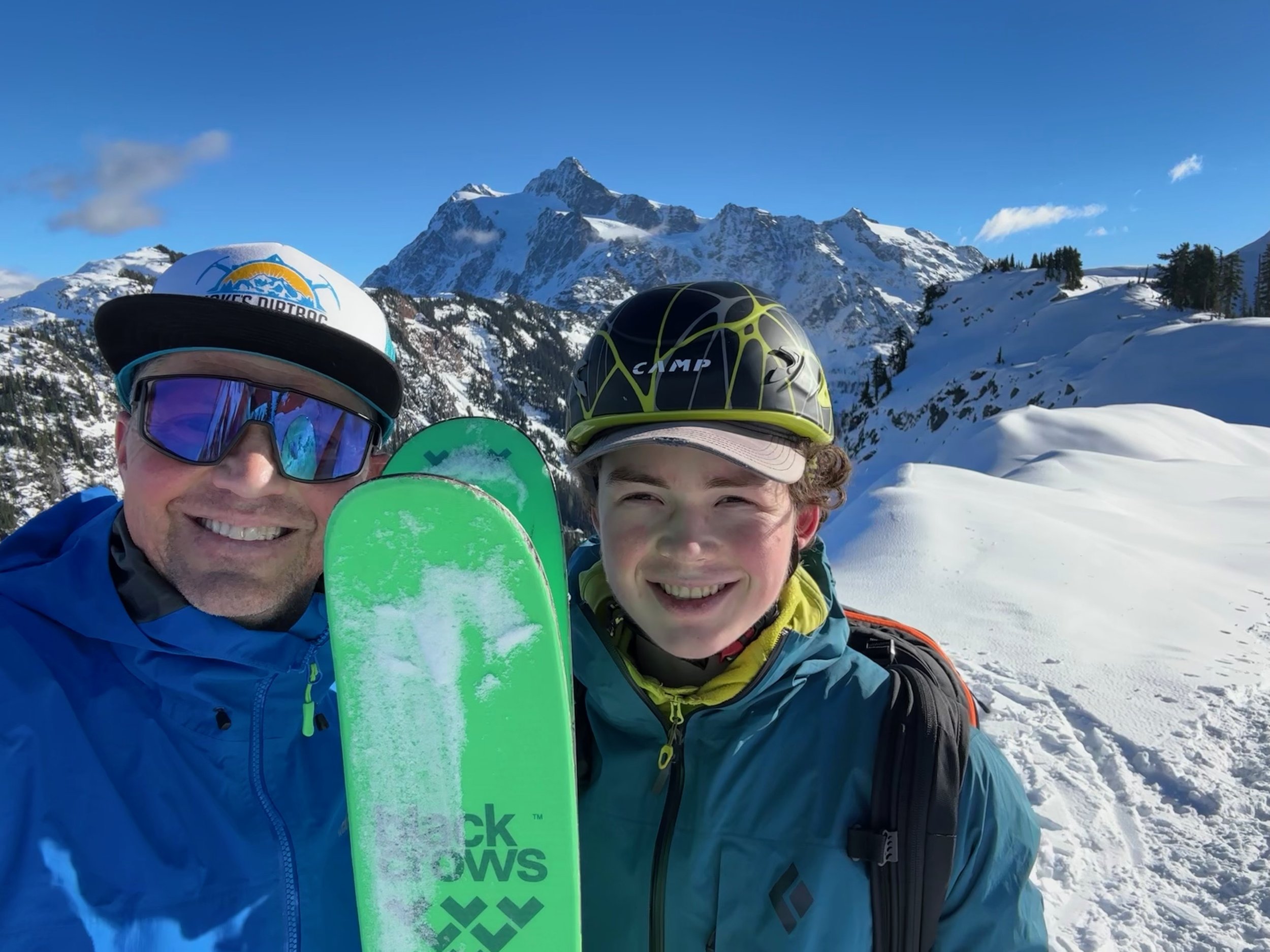
Jake and Quinn backcountry skiing - Mount Baker Backcountry - November 2023. Photo credit: Jake Hartsoch
Preparation as an Act of Love
From someone waiting for you at home
On September 8th, 2024, Jake fell to his death on his favorite mountain, the North Twin Sister, a 6600 foot olivine peak in Washington’s North Cascades with a class 3 scramble approach. My geologist friend Jackie tells me that the North Twin is a rare outcropping of the mantle of the earth, the olivine rock a distinctive rusty hue.
Mountains were as necessary as air for Jake, and he'd summited this one dozens of times - with friends and alone, on skis and in shorts. The trailhead is just an hour drive from home, and Jake was there so frequently that people jokingly referred to him as the mayor of the North Twin. Every year he bought a key to the logging company gate, granting access to 5 more miles of logging road, effectively bringing the wild terrain closer to home.
Jake was widely considered to be conservative about risk, and many in our community reacted to the news of his accident with disbelief. On every adventure, Jake evaluated and minimized risk. How could this have happened to Jake, someone with extensive experience and wisdom? And - unspoken - if it can happen to Jake, then could it happen to me?
Compared with the population as a whole, I consider myself a fairly outdoorsy person, but compared with Jake I am positively pedestrian. I often choose to run or ride from home and have more time for other priorities. By default, I was the one who noticed if Jake was late coming home, and over the years, I pushed him to take responsibility for the risks inherent in adventuring in wild places.
Between Jake’s adventures, we prepared, and I’ve come to think of this preparation as an act of love. Jake’s practical acts of love made the tragedy of his death easier to navigate and less traumatic for his family and friends. We mourne Jake’s loss, but I feel no resentment or regret, and I don’t have to uproot my kids and sell my house.
Risk is part of life, and I don’t want to hyperbolize the risk of adventuring compared with other risks we take: driving on the freeway; owning a swimming pool; sitting on the couch. Adventures deliver physical and mental health benefits which usually far outweigh the risks. In accepting risk, we can consider those who depend on us, who would be affected if things go wrong, and take measures to minimize the negative impact on them.
None of us wants to think the worst will happen to us, or to those we love. Part of being adults, however, is taking responsibility for our choices. So I invite you to join me in the discomfort of imagining our own tragedy; in taking responsibility for this work; and in giving our loved ones the gift of preparation.
Here are the lessons learned as someone with a lot of experience waiting for an adventurer to return home.

Jake skiing the North Twin, January 2023. Photo credit: Gabriel Wicke
Designate Beneficiaries and Sign Those Documents
Jake left a signed durable power of attorney, healthcare directive, and a will. If you are an adult, the first two are a minimum, and will relieve your loved ones of having to guess your wishes if you are incapacitated. There are a number of free downloadable templates specific to your state and in Washington the forms need just two witnesses. If you have people who depend on you and/or you have assets, write a will.
Designated beneficiaries on financial accounts make the distribution process much easier, and it is especially easy if the beneficiary is your spouse. Rules for spouses inheriting investment accounts are much more flexible than non-spouse beneficiaries. In general, Jake did a great job managing his retirement accounts, but he left one account with no beneficiary, meaning I have to go through the court process of probating his will. He also designated our kids as beneficiaries on an account, requiring that I open a special type of account for non-spouse beneficiaries, creating extra hoops and paperwork for me. This process would have been very smooth had I been the designated beneficiary on all of his accounts. Funds in accounts with designated beneficiaries are disbursed before a will is even consulted. I thought Jake’s will would provide the primary direction for distribution of his assets, but this has not been the case so far.
If you have dependents, make sure you have sufficient life insurance with a reputable company. Several variables impact how much life insurance you should carry, and calculators abound on the internet to help you sort it out. Once you have it, make sure that premium gets paid, and keep a copy of your policy. Don’t put your loved ones in a financial crisis, having to move to different housing, or worse, while they are mourning your death.
Tell your people where to find these documents. Your healthcare directive and durable power of attorney should be accessible quickly in an emergency.
Communicate Your Plans
Years ago, the first time I stayed up late waiting for Jake to return from some unknown adventure, I was angry when he walked in the door. I detailed my grievance: he hadn’t told me where he was going or when to expect him home. I wondered if I should call for an emergency response, but worried I’d just be overreacting and feel silly. I wanted him to tell me who to call, and when, if he was late. It was a burden to have to figure it out late at night while home alone with our kids.
I remember Jake emphasizing that calling for official Search and Rescue (SAR) should never be plan A. “My friends will find me much faster,” he said.
After that day, I required Jake send me a text message before each adventure with four points.
Destination and planned route
Expected return time
Time when I should call emergency response
Who I should call for emergency response
With this simple habit, Jake took responsibility for key decisions around his own search and rescue response.
The morning of his death, Jake’s text to me read “Biking to n twin. Back 4ish”. It contained only the first two points, but even that minimal information was gold that night. We knew where he was headed and his timeline. An inReach automatically transmitting his location on a regular basis would have been even better, especially if he had been alive and suffering. In his fall, Jake was separated from his phone - another hiker finding it halfway down the slope four days later. The current iPhone SOS technology - which Jake had - would have required he be conscious and have access to his phone, neither of which were true for Jake.
Having received more complete texts on many previous adventure mornings, I knew that his friends Ingmar Prokop and Peter Lillesve would be the “who” for emergency response and I had their phone numbers, but at 6pm when Jake wasn’t home, I worried about the “when”. At 7pm I called Ingmar to talk it through, and we decided to drive to the West Ridge trailhead, figuring we’d see Jake walking his broken bike along the way. I asked my parents to take my 15-year-old home from my dad’s birthday party, expecting to be home in a couple of hours. Instead, Ingmar and I saw no sign of Jake on the drive in, parked at the trailhead and jogged in the first two miles, finding Jake’s bike at 9 pm where he’d left it at the start of the climber’s trail.
Make an Emergency ‘Plan A’ With Your Family and Adventure Partners
Jake told me repeatedly that if he was late getting home I should call Ingmar and Peter - two of his favorite adventure partners and experienced skiers and mountaineers - because they would find him faster than the official search and rescue (SAR) response. This proved true the night we searched for Jake when, after calling 911 at 9 pm, we heard nothing from the official SAR response for 10 hours due to triage choices and a breakdown in communication between 911 dispatch and the SAR sheriff’s deputy. By the time SAR scrambled a helicopter around 7:30 a.m., we had searched the entire route - Peter reaching the summit at 3 am - and could tell SAR that we’d seen no sign of him except his bike at the trailhead.
Had Jake and I not made an emergency plan, had I just called 911 and waited, or driven to the trailhead alone, or had to stay home with small kids, I can only imagine the frustration and helplessness I would have felt that night and the regret I might feel now.
Jake and I did not plan for someone to watch our kids. I suppose we assumed I would not participate in the rescue. In retrospect, I encourage you to make these plans. That night, my parents Brian and Susan Mulligan were able to take our 15 year old home with them. Ingmar’s wife Andrea provided similar support, so Ingmar and I were both free of parenting responsibilities.
Peter, Ingmar, and I became a team. At midnight, we began the hike in, ready to keep Jake’s spirits, hydration, blood sugar, and body temperature up through the night with gummy bears, Coke, mini donuts, and warm sleeping bags.
I get to live the rest of my life knowing that I loved Jake with everything I had until the very last minute because I was there with a great team. I can’t tell you what a gift that peace is right now.
Give your loved ones this gift. Talk openly about what to do if you’re home late. Identify your rescue team and bring them in on the plan. Know who will come watch your kids so your partner can participate in the rescue if they choose. Have a rescue planning party, because everything is more fun with a party.
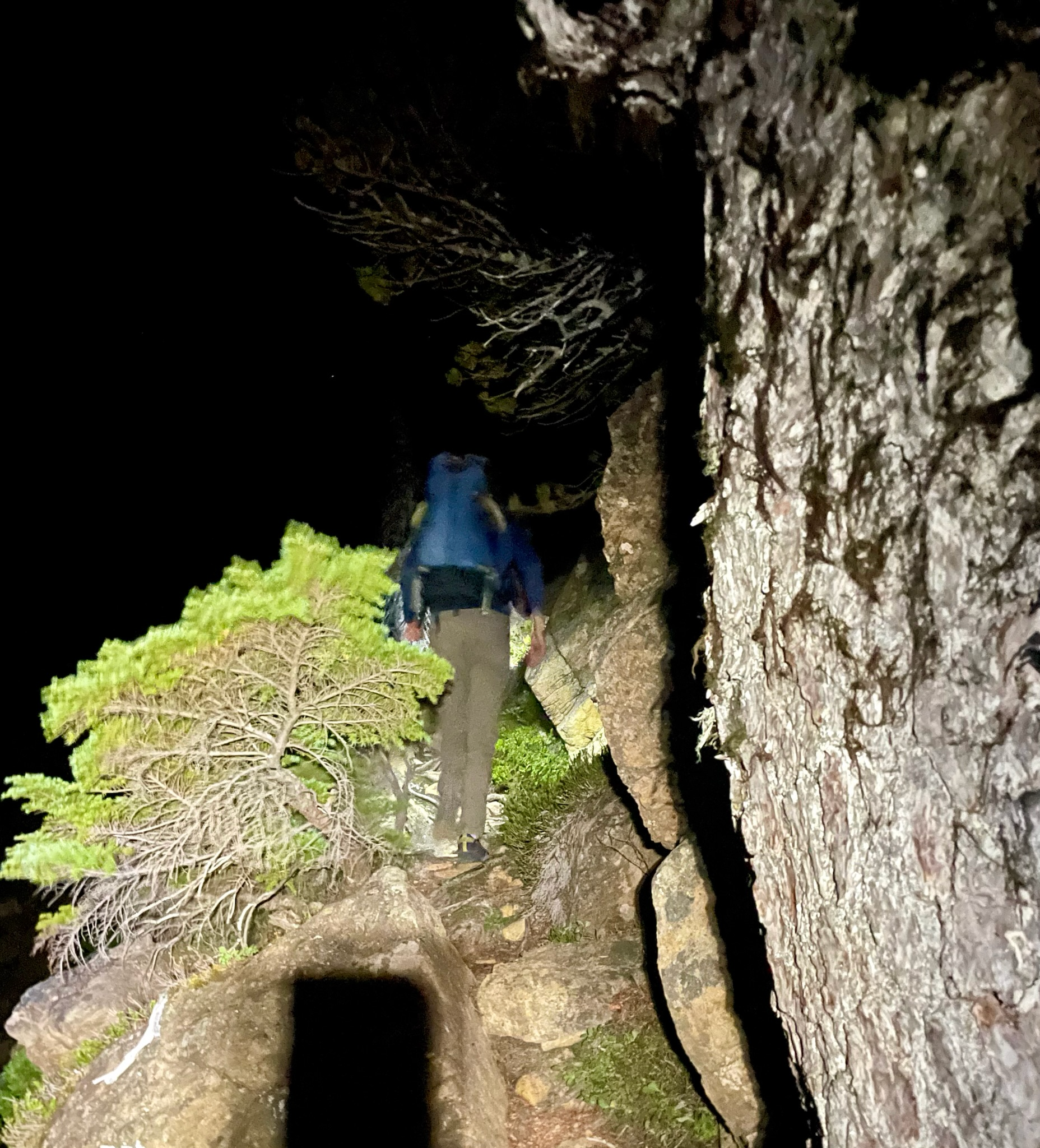
Ingmar hiking the West Ridge Trail at 1:15a.m., 9 September 2024. Photo credit: Beth Hartsoch

Ingmar and Peter prepare to continue climbing from camp at 5000 feet. 1:30 a.m., 9 September 2024. Photo credit: Beth Hartsoch

Ingmar and Peter's headlamps light up the North Twin face. 1:45 a.m., 9 September 2024. Photo credit: Beth Hartsoch
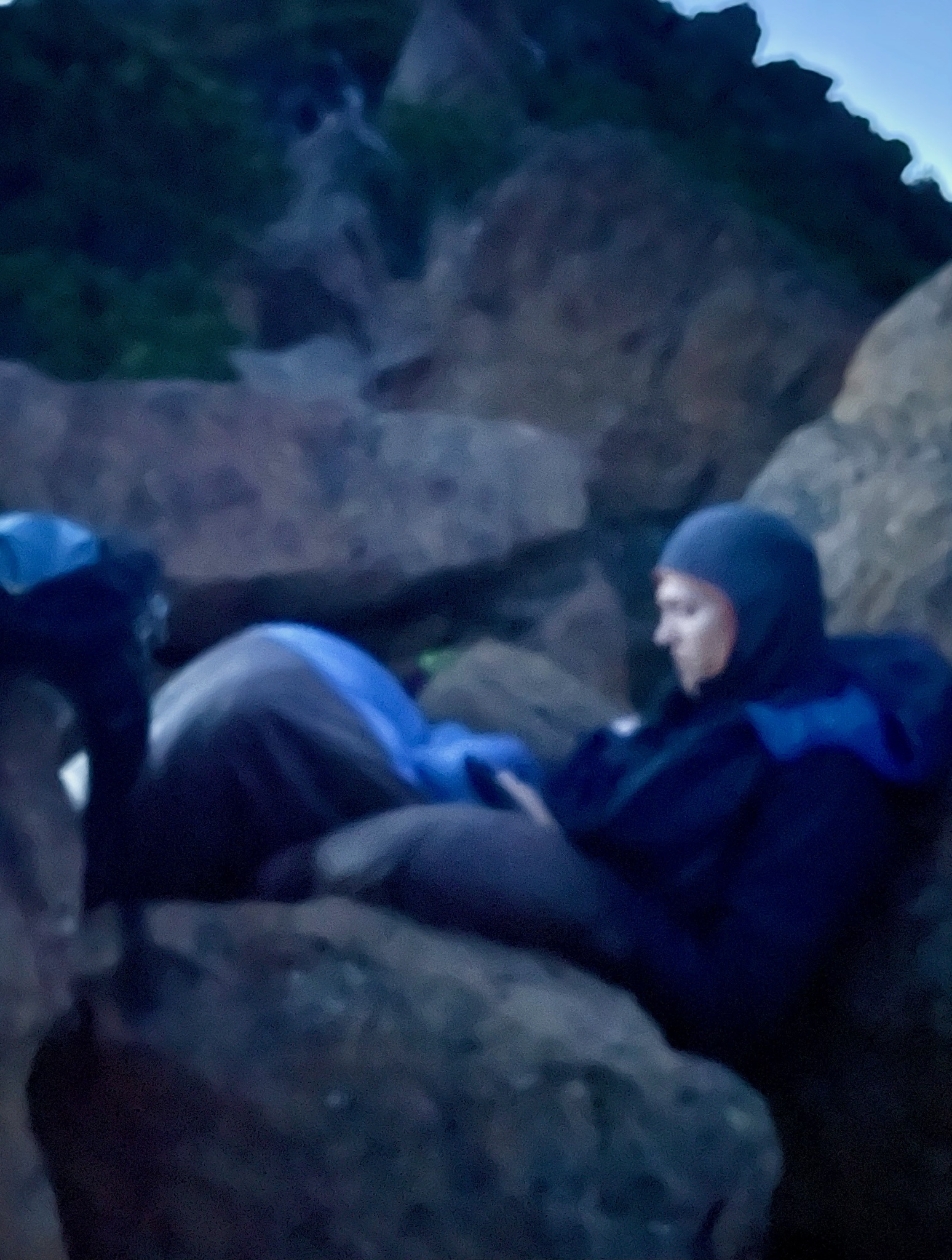
Ingmar awaiting word from Peter or SAR. 5:50 a.m., 9 September 2024. Photo credit: Beth Hartsoch
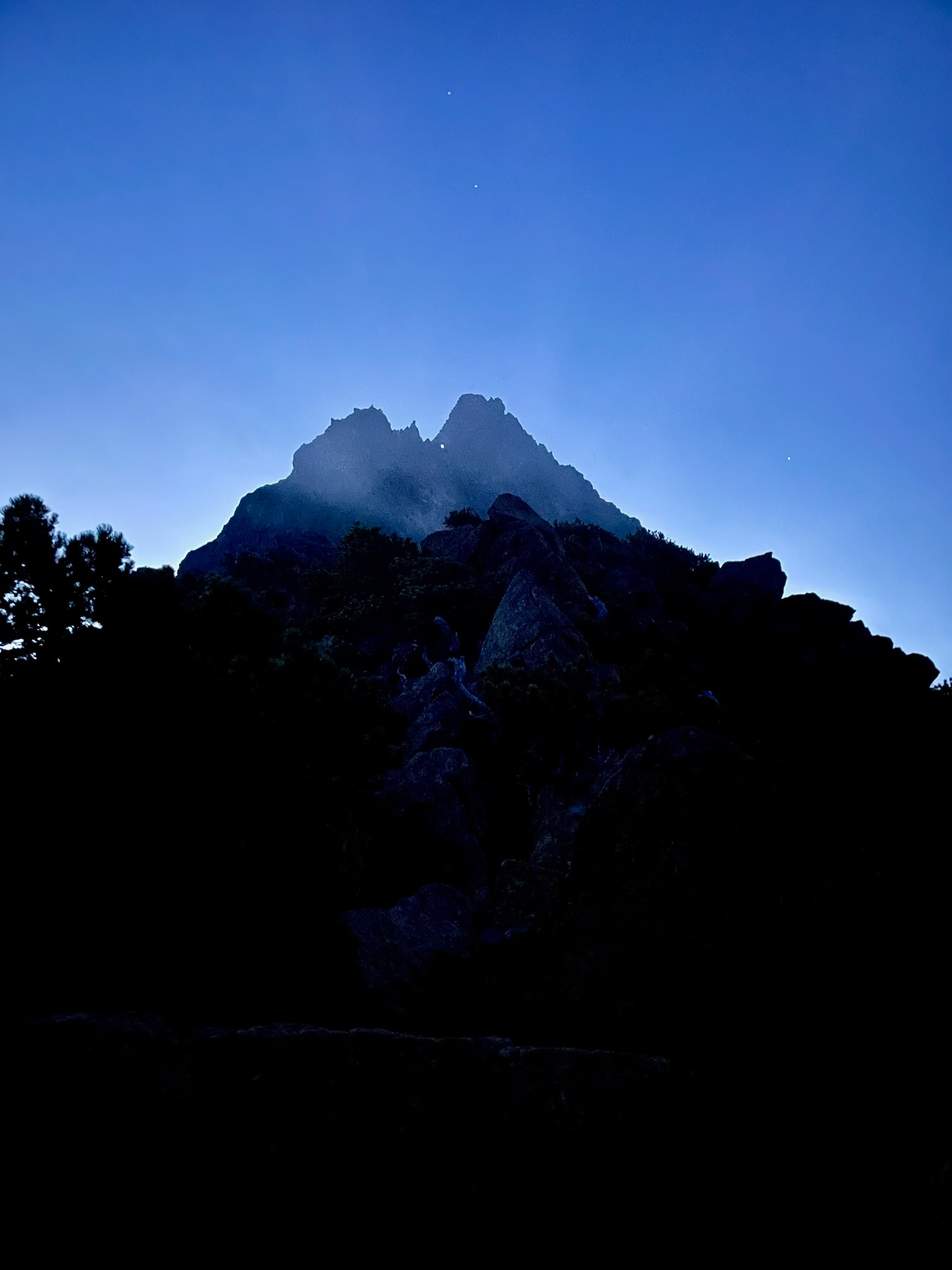
Peter's helmet light is visible from camp at 5000 feet. 5:50 a.m., 9 September 2024. Photo credit: Beth Hartsoch

Peter returns to camp. 6:50 a.m., 9 September 2024. Photo credit: Beth Hartsoch
Understand how Official Search and Rescue Works
When Ingmar and I parked at the trailhead we texted Peter from Ingmar’s inReach and asked him to call 911. The message was painfully slow in sending, taking about 10 minutes to transmit. When we reached Jake’s bike at the campsite on the West Ridge trail 15 minutes later, Ingmar sent another text confirming that Jake was still on the mountain. In our naivete, we thought we’d activated an SAR response and expected their arrival within an hour or two, but the truth was more complicated, and far slower than we imagined.
Earlier in the evening while driving out of Bellingham, Ingmar had called Peter and asked if he would be our SAR contact on the off chance we needed to call 911. There’s no reliable cell service on the West Ridge trail, Peter is familiar with the area and with Jake, and he had good phone service at his house in Bellingham.
Once Peter received our text and called 911, he packed supplies, and at 11pm handed off SAR contact duty to his wife Julianna - calling 911 again to give them Julianna’s phone number - and met Ingmar and I at the Nooksack Market. At midnight we began the hike in.
We had phones with TMobile and Verizon service, allowing us a better likelihood of finding cell reception, and two inReaches between us. Julianna called the sheriff’s office during the night and gave her cell number again, but there was no response. At daybreak Peter called 911 again from our make-shift camp at 5000 feet, and shortly afterward we had our first contact with the SAR deputy, 10 hours after our initial call.
There is variation in official search and rescue practices depending on location, so it’s important to be familiar with your local search and rescue structure. Starting a rescue is typically done by either calling 911 or activating a personal locator beacon/satellite device. Calling 911 requires reasonably good cell reception. Expect to receive further calls once you make the initial call, so the ability to answer the phone is important.
When you speak with 911 or a SAR contact, the more information you can provide, the better. The best is GPS coordinates and severity of injury. Other key details include the missing person’s medical history, level of familiarity with the terrain, and the equipment available on scene.
Activating the SOS feature on an inReach (or similar) device sends a message to their dispatch center which contacts local emergency dispatch, and can function similar to calling 911 or in tandem with it by providing GPS coordinates and facilitating communication with those closest on the ground.
In Whatcom County, once our local dispatch receives a SAR request it’s routed to the SAR sheriff’s deputy on duty. SAR deputies triage SAR requests received through 911 based on a number of factors such as the missing person’s experience level, medical history, familiarity with the terrain, and the weather. It is possible that they will decide not to activate an SAR team based on these factors, but at a minimum the SAR deputy will call back within an hour of your 911 call. If you haven’t received a call from the SAR deputy, no response is underway.
The night we searched for Jake, the deputy on duty declined to activate a SAR team, judging that Jake’s experience, good health, familiarity with the mountain, and the mild weather didn’t warrant urgency. Unfortunately, we never received this message, and expected SAR to appear at any time. At first, this expectation affected our decisions. We didn’t immediately prepare to hike the West Ridge trail, assuming we’d talk with SAR prior to the next step. As the wait passed an hour, we decided to begin the hike anyway.

SAR helicoptor arrives. 8:50 a.m., 9 September 2024. Photo credit: Beth Hartsoch

SAR helicoptor located Jake's body. 9:00 a.m., 9 September 2024. Photo credit: Beth Hartsoch
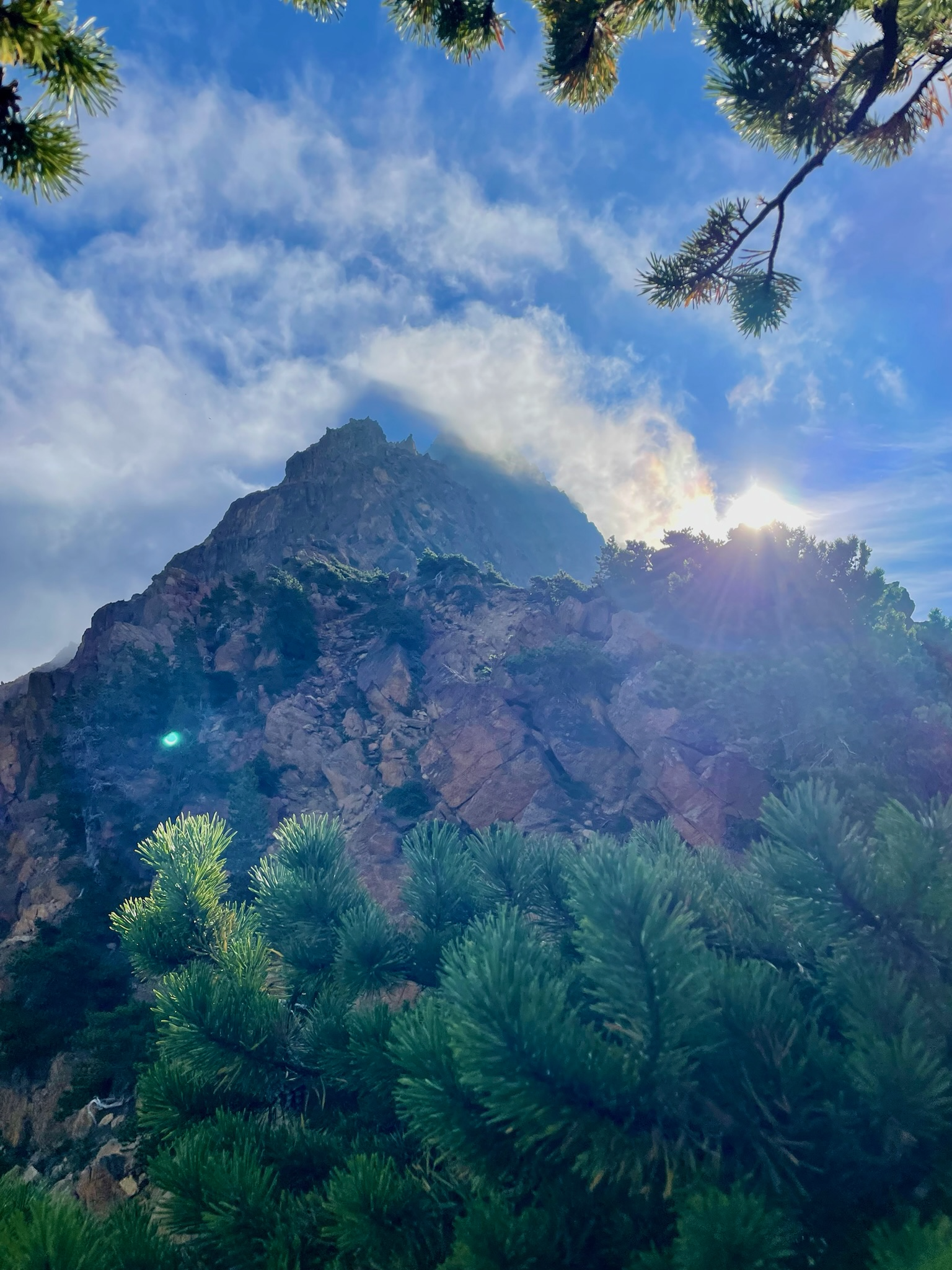
Dawn over the North Twin. 9:20 a.m., 9 September 2024. Photo credit: Beth Hartsoch
Adulting First, Adventuring Second
Jake fell 250 vertical feet and died almost instantly. His GPS watch provided a lot of data to illustrate this end. He did not suffer, and so these lessons can be learned without the nightmares and regret that would have plagued me if he had.
Not everyone is so lucky. Love the people who await your return from adventures by taking responsibility for your actions. Work with them to honestly evaluate and mitigate the risks to their wellbeing. Organize your financial life, make SAR plans with your people, communicate your adventure plans, make yourself easy to find, understand how official SAR works, and give your loved ones the gift of knowing how to look for you.
Then go be alive in the world.
Beth Hartsoch
Ingmar Prokop
Peter Lillesve
Julianna Safstrom